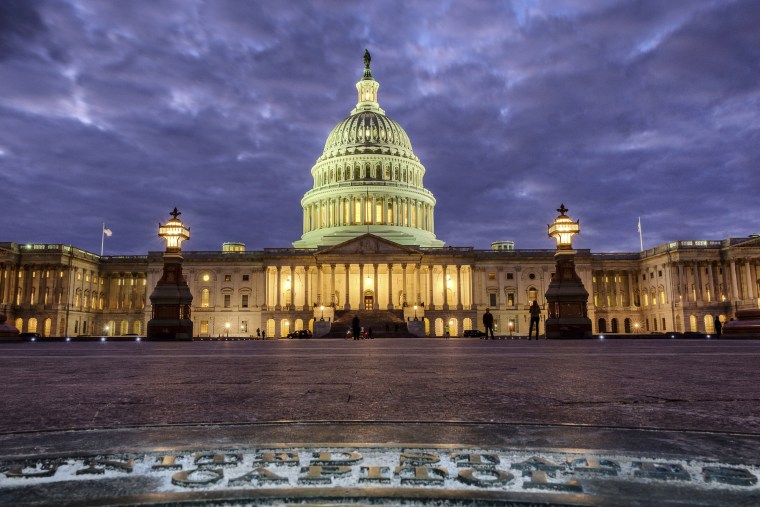WASHINGTON — The Great 60-Hour Government Shutdown of 2018 appears to be over — at least for now — with Senate Democrats agreeing to fund the government through Feb. 8.
And here are the lessons we learned, especially since it’s possible (if not likely) that another shutdown could occur after that next deadline in early February.
1. Democrats had less leverage than many of them believed: Not controlling a single branch of government, Democrats couldn’t force Republicans to codify a Dream Act via a government shutdown, whether that shutdown was 60 hours or 60 days. And enough Democrats didn’t quite have the appetite for a long fight, either.
2. That weaker hand for Democrats was particularly true once Republicans Lindsey Graham and Jeff Flake said they’d vote to keep the government open: Senate Democrats, including those from red and purple states, had cover when a handful of Republicans also opposed keeping the government open. But they lost that cover when Graham and Flake changed their minds over the weekend.
3. Democrats preserved their ability to do this again after Feb. 8: Democrats can use the leverage they have (even if it’s less than they think) if there’s still no deal by next month. Had they not retreated now, they would have had to stick it out under a worse political environment.
Oh, and the agreement to reopen the government extends funding for the Children’s Health Insurance Program (CHIP) for six years. So CHIP is now off the table if there’s another shutdown fight.
4. The DACA battle will be the dominant political storyline over the next 17 days — and maybe beyond: There will now be even more focus on the beneficiaries of the Deferred Action for Childhood Arrivals program — and what will happen to them if the program is indeed ended on President Donald Trump’s deadline of March 5.
5. Trump was a nonplayer in these negotiations: He was missing in action, and it’s possible it remains that way, at least until any DACA action reaches the House, where the president might be needed to give cover to Republicans.
6. There’s still a governing caucus in the Senate: From GOP Sens. Jeff Flake/Lindsey Graham/Susan Collins to Democratic Sens. Joe Manchin and Claire McCaskill, along with Angus King, an independent who caucuses with Democrats, there’s a coalition able to produce bipartisan compromise.
7. It’s unclear/doubtful if that same governing caucus exists in the House: See the fate of immigration reform in 2013-2014.
8. If 700,000 'Dreamers' get deported after March 5, you’ll know who to blame: While Trump rescinded the DACA program, he also sometimes talked like he wanted a solution to keep the Dreamers.
It’s doubtful he’ll get the benefit of the doubt the next time around, especially after his profanity heard around the world.
9. We still don't know who's negotiating for the White House: This question reallywasn’t resolved during this shutdown fight, and until it is, we'll be in exactly the same position. Has White House Chief of Staff John Kelly become a bigger player or a smaller one? We know Trump doesn’t like a storyline that has him being “constrained,” so how much damage was done to the relationship between those two?
